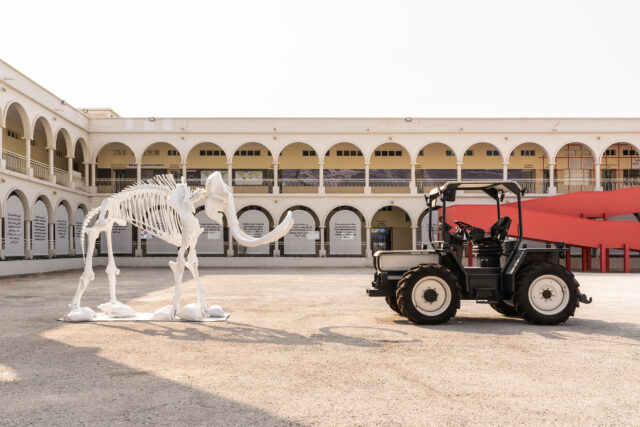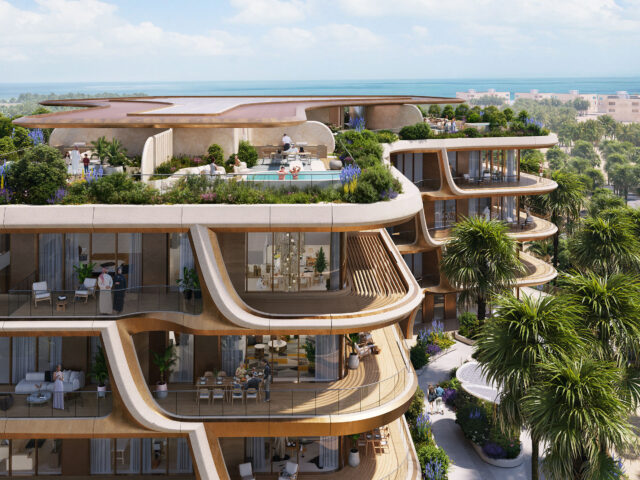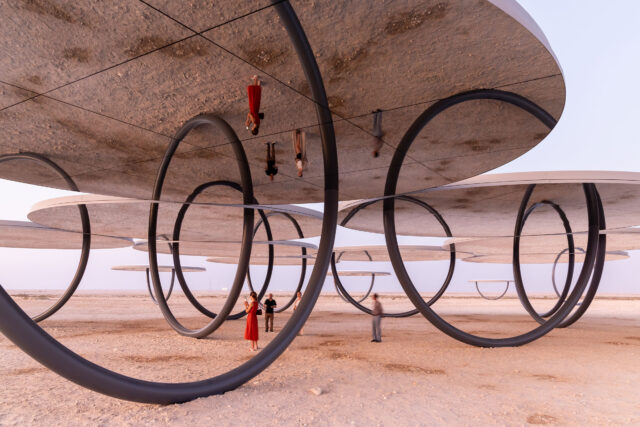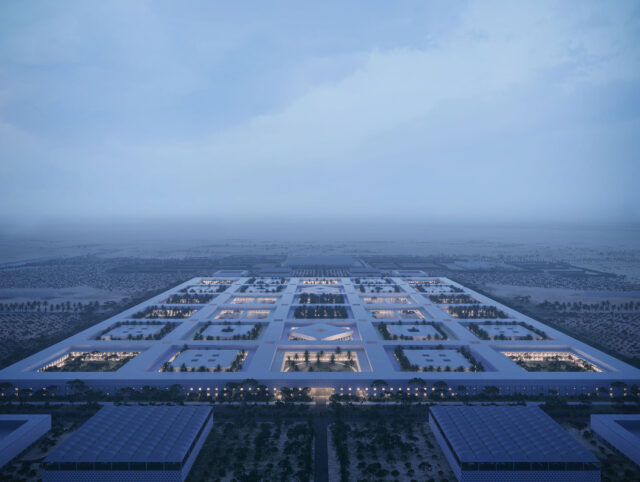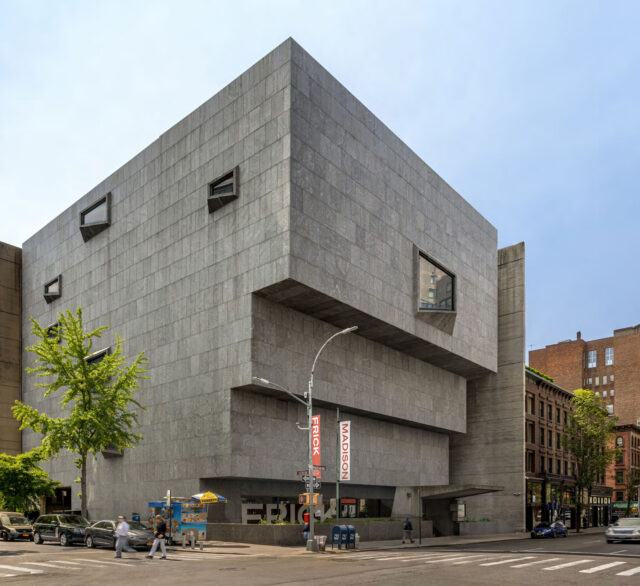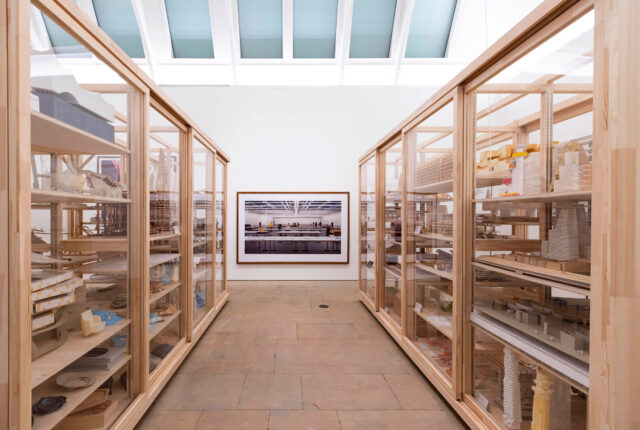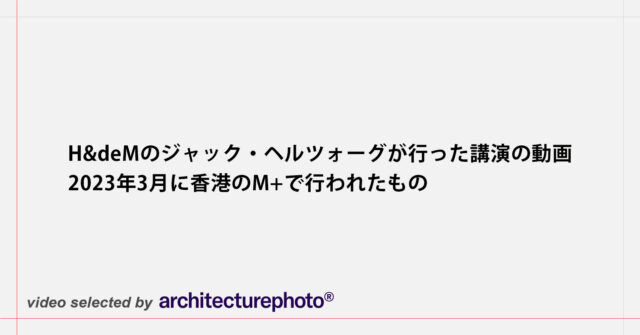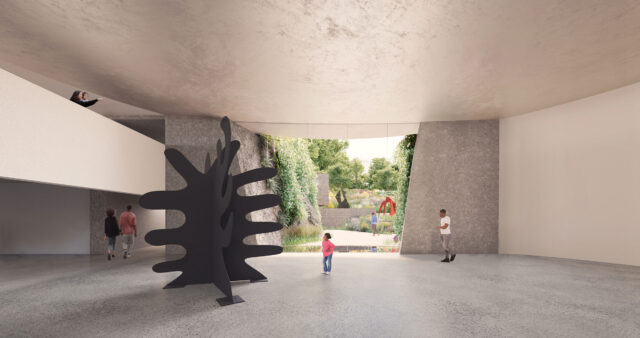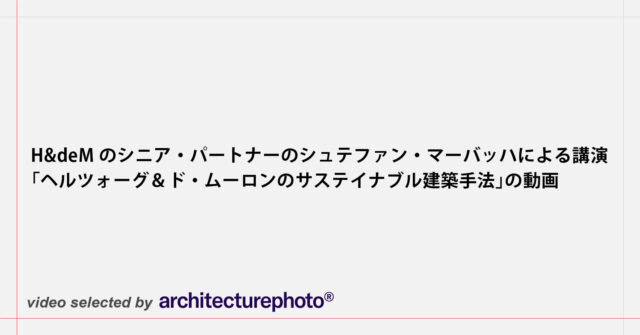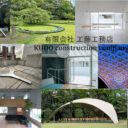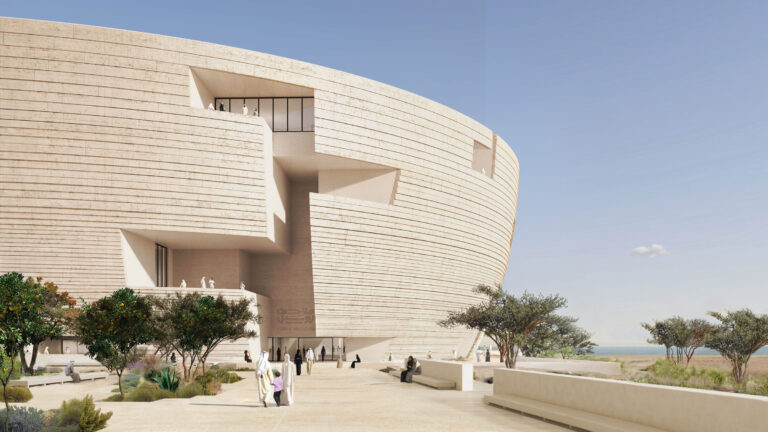
SHARE ヘルツォーグ&ド・ムーロンによる、カタールの「ルサイル博物館」。地域の文化的な核を目指す施設。“都市をひとつの建物に収めた”建築として構想され、周辺環境に応じた荒々しい“土地の一部”の様な外観が特徴。最上階には4つの歴史的建築を抽象化した展示空間も備える




ヘルツォーグ&ド・ムーロンが設計している、カタールの「ルサイル博物館(Lusail Museum)」です。
地域の文化的な核を目指す施設です。“都市をひとつの建物に収めた”建築として構想され、周辺環境に応じた荒々しい“土地の一部”の様な外観を特徴としています。また、最上階には4つの歴史的建築を抽象化した展示空間も備えています。
こちらはリリーステキストの翻訳です
カタール博物館が、ヘルツォーグ&ド・ムーロンの設計による未来のルサイル博物館の新しい建築レンダリングを公開
カタール博物館は本日、未来のルサイル博物館の新しいレンダリング画像とバーチャル・フライスルー映像を公開し、プリツカー賞を受賞したスイスの建築家ヘルツォーグ&ド・ムーロンが設計したこの世界的な芸術施設とグローバルなシンクタンクの建物の新たな詳細を明らかにしました。
比類なきオリエンタリズム美術のコレクションを有するルサイル美術館は、過去から現在に至るまで、世界各地における人々と思想の動きを探求し、対話、芸術、革新を通じて分断された世界の架け橋となることを目指しています。著名な学者、アーティスト、政策立案者、思想家、キュレーターなどの参加を得て、ルサイル美術館は重要な世界的問題についてのハイレベルな研究、議論、討論、調停を行う機会を提供します。この博物館のデザインは、「縦に重なったスーク(※アラビア語で市場)あるいはミニチュアの都市をひとつの建物に収めたもの」として構想された建物で、融合と対話というこの使命を表現しており、ドーハの北に現在実現しつつある持続可能な都市、ルサイル・シティの文化的な核となります。
カタール博物館のチェアパーソンであるシェイカ・アル・マヤッサ・ビント・ハマド・ビン・ハリーファ・アル・ターニ閣下が、2023年12月にデビューしたカタールの現代文化開発を探求する彼女のポッドキャスト「The Power of Culture」の初回エピソードで、ジャック・ヘルツォーグとデザインについて議論しています。このエピソードでは、ヘルツォークが建築に対するアプローチと、ルサイル博物館のために地元の素材や、近代カタールの創始者であるシェイク・ジャシム・ビン・モハメド・アル・タニが1800年代後半に居を構えた地域に近いこの場所の歴史的意義から得たインスピレーションについて語っています。
博物館のためのヘルツォーク&ド・ムーロンのデザインは、島の南端を占め、島の中で物理的な目印として機能します。このプランは円の形をしており、普遍的な意味と、中東とドーハの建物の伝統に対する具体的な反応の両方を伝えています。交差する3つの球体が建物のボリュームを形作り、2つの異なる部分に分けています。ひとつは満月のような形、もうひとつはその周りを包む三日月のような形です。球体から派生した二重の曲面が、三日月形の内部通りを形成し、上方から自然に光が差し込む。この通りは、美術館の入口と中央ロビー、そして図書館、講堂、ショップ、カフェ、祈りの場などの公共機能をつなぐ役割を果たしています。
建物の外観は、海岸沿いという環境に応じて、荒々しく、土のようで、砂のようで、弾力性があり、まるで、その土地そのものの一部であるかのように見えます。日光は、ファサードから切り取られた深く窪んだ窓から室内空間に入り、室内を直射日光から守っています。また、周囲の海とルサイルの街並みは常に視界に入ります。地元や地域の職人やクラフトマンとのコラボレーションは、地元の風土との直接的なつながりを保証し、歴史的な職業や技術の保存と文化交流の促進におけるプロジェクトの役割を強化します。
建物の堅牢なコンクリートの表情の中に、カウンターポイントとして挿入された空間は、訪問者に異なるスケール、素材の質、そして感覚的な体験をもたらします。中央の彫刻的な磨き上げられた石膏の階段、反射する金属製の祈りのスペース、木製のパネルで覆われた図書室、ソフトで親しみやすい講堂、そしてクッションや布張りのニッチなど、すべての場所に、木、テキスタイル、金属、セラミックタイルなど、さまざまな触感の質感や素材が特徴となっています。
ギャラリーフロアの展示スペースは、場所によって形やプロポーションが異なりますが、いずれもさまざまなタイプの展示に柔軟に対応できます。ギャラリーの最上階には、アンカースペースとして、重要な歴史的建造物の内部から4つの抽象的なレプリカが挿入されています。イスタンブールのトプカプ宮殿にあるムラト3世の寝殿を覆うドーム(1579年)、ナタンツのジャメ・モスクのドーム(1320年)、カイロのイブン・トゥルン・モスクの中庭にある沐浴の泉(1296年)、サラゴサのアルジャファリア・ドーム(1050年)。地理的遺産に関連した、独特の幾何学と装飾を持つ4つのクーポラです。ペンデンティブ、クロスアーチ、ムカルナ、スクインチが、選ばれたドーム・タイプロジーの特徴的な幾何学形状です。それらは、伝統的なギャラリーの一連の流れを断ち切り、予期せぬ空間体験を提供しながら、卓越したキュレーションと教育の機会を提供するために使われます。ドームは、この4つの部屋の建築タイポロジーとして選ばれており、それぞれが普遍的であると同時に特異的でもあります。普遍的であるのは、ドームがいつの時代にも文化を超えて出現してきたからであり、特異であるのは、ドームという唯一の「理想的な」形が、地域の地理的・文化的影響によってバリエーションを生み出してきたからです。
以下の写真はクリックで拡大します












以下、リリーステキストです。
QATAR MUSEUMS REVEALS NEW ARCHITECTURAL RENDERINGS OF THE FUTURE LUSAIL MUSEUM, DESIGNED BY HERZOG & DE MEURON
DOHA, 8 February 2024 -Qatar Museums today released new renderings and a virtual flythrough video of the future Lusail Museum, revealing new details of the building for this world-class arts institution and global think tank designed by the Pritzker Prize-winning Swiss architects Herzog & de Meuron.
With its unparalleled collection of Orientalist art, the Lusail Museum will explore the movement of people and ideas across the globe, past and present, helping to bridge a divided world through dialogue, art, and innovation. With the participation of distinguished scholars, artists, policy makers, thought leaders, curators, and others, the Lusail Museum will provide opportunities for high-level study, discussion, debate, and mediation on critical global issues. The design for the museum expresses this mission of convergence and conversation in a building conceived as “a vertically layered souk, or miniature city contained within a single building,” which will be the cultural anchor of Lusail City, the sustainable city now being realized north of Doha.
Qatar Museums’ Chairperson, Her Excellency Sheikha Al Mayassa bint Hamad bin Khalifa Al Thani, discusses the design with Jacques Herzog in the inaugural episode of “The Power of Culture,” her podcast exploring the modern cultural development of Qatar, which debuted in December 2023. In the episode, Herzog shares his approach to architecture and the inspiration he drew for the Lusail Museum from local materials and the historical significance of the location, which is near the area where Sheikh Jassim bin Mohammed Al Thani, founder of modern Qatar, made his home in the late 1800s.
Herzog & de Meuron’s design for the museum occupies the southern tip of the island and acts as a physical marker within the island. The plan takes the form of a circle, which conveys both universal meaning and a specific response to the building traditions of the Middle East and Doha. Three intersecting spheres shape and carve the volume of the building into two distinct parts: one resembling a full moon, the other a crescent moon wrapping around it. Double curvatures derived from the spheres form a crescent-shaped internal street naturally lit from above; it serves to connect the entrances of the museum to the central lobby and other public functions such as a library, auditorium, shop, cafe, and prayer space.
The building exterior is rough, earthen, sand-like and resilient, in response to its coastal setting; it appears as if it is a piece of the land itself. Daylight enters the interior spaces through deeply recessed windows cut out of the facade, protecting the interiors from direct sunlight; the surrounding sea and city of Lusail remain constantly visible. Collaborations with local and regional artisans and craftspeople will ensure a direct connection back to the local vernacular and reinforce the project’s role in preserving historic trades and fostering cultural exchange.
Within the robust concrete expression of the building, spaces inserted as counterpoints bring a different scale, material quality, and sensory experiences for the visitor. A central sculptural polished plaster stair, a reflective metal prayer space, a wooden-paneled library, a soft and intimate auditorium, and several cushioned and upholstered niches throughout all feature a variety of haptic qualities and materials such as wood, textiles, metals, and ceramic tiles.
The display spaces on the gallery floors differ in shape and proportion depending on their location, yet all provide flexibility for various types of exhibitions. Four abstract replicas from the interior of important historical buildings are inserted into the top gallery floor as anchor spaces: The dome covering Murat III’s bedroom pavilion in the Palace of Topkapi in Istanbul (1579); the dome of the Jameh Mosque in Natanz (1320); the Ablution fountain in the courtyard of Ibn Tulun Mosque in Cairo (1296) and the Aljafaria dome in Saragossa (1050); four cupolas with distinct geometry and ornamentation relating to their geographical heritage. Pendentives, cross arches, muqarnas and squinches are the defining geometries of the selected dome typologies. They are used to break the sequence of the more traditional galleries and to provide exceptional curatorial and educational opportunities while offering unexpected spatial experiences. The dome has been chosen as the architectural typology for these four rooms, each of which is universal and specific at the same time; universal because domes have appeared across cultures throughout time, and specific because the singular “ideal” form of the dome has developed variations through local geographic and cultural influences.


